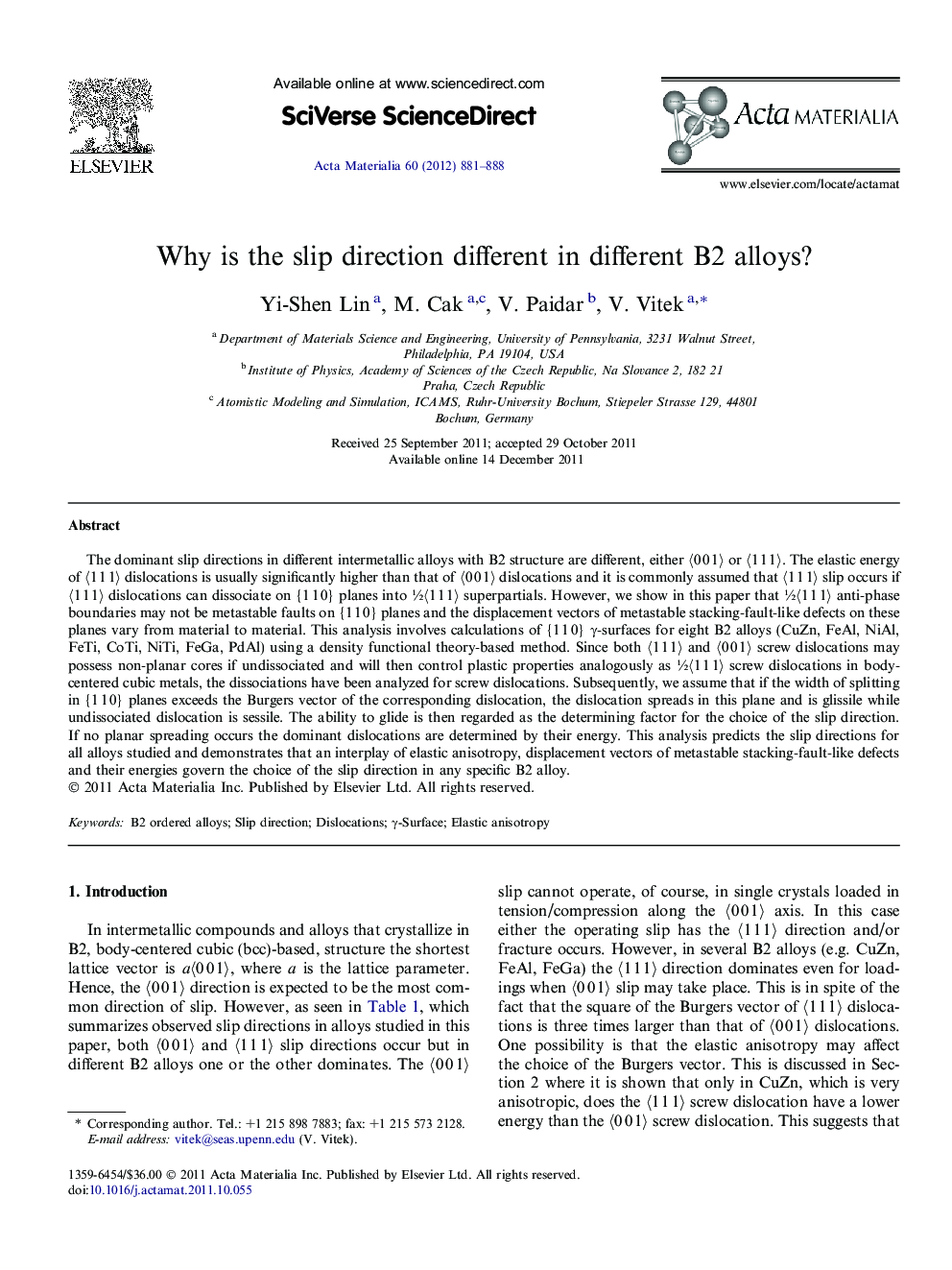| Article ID | Journal | Published Year | Pages | File Type |
|---|---|---|---|---|
| 10620501 | Acta Materialia | 2012 | 8 Pages |
Abstract
The dominant slip directions in different intermetallic alloys with B2 structure are different, either ã0 0 1ã or ã1 1 1ã. The elastic energy of ã1 1 1ã dislocations is usually significantly higher than that of ã0 0 1ã dislocations and it is commonly assumed that ã1 1 1ã slip occurs if ã1 1 1ã dislocations can dissociate on {1 1 0} planes into 1/2ã1 1 1ã superpartials. However, we show in this paper that 1/2ã1 1 1ã anti-phase boundaries may not be metastable faults on {1 1 0} planes and the displacement vectors of metastable stacking-fault-like defects on these planes vary from material to material. This analysis involves calculations of {1 1 0} γ-surfaces for eight B2 alloys (CuZn, FeAl, NiAl, FeTi, CoTi, NiTi, FeGa, PdAl) using a density functional theory-based method. Since both ã1 1 1ã and ã0 0 1ã screw dislocations may possess non-planar cores if undissociated and will then control plastic properties analogously as 1/2ã1 1 1ã screw dislocations in body-centered cubic metals, the dissociations have been analyzed for screw dislocations. Subsequently, we assume that if the width of splitting in {1 1 0} planes exceeds the Burgers vector of the corresponding dislocation, the dislocation spreads in this plane and is glissile while undissociated dislocation is sessile. The ability to glide is then regarded as the determining factor for the choice of the slip direction. If no planar spreading occurs the dominant dislocations are determined by their energy. This analysis predicts the slip directions for all alloys studied and demonstrates that an interplay of elastic anisotropy, displacement vectors of metastable stacking-fault-like defects and their energies govern the choice of the slip direction in any specific B2 alloy.
Keywords
Related Topics
Physical Sciences and Engineering
Materials Science
Ceramics and Composites
Authors
Yi-Shen Lin, M. Cak, V. Paidar, V. Vitek,
